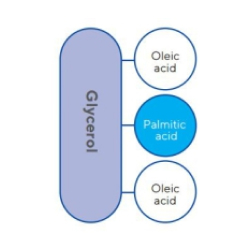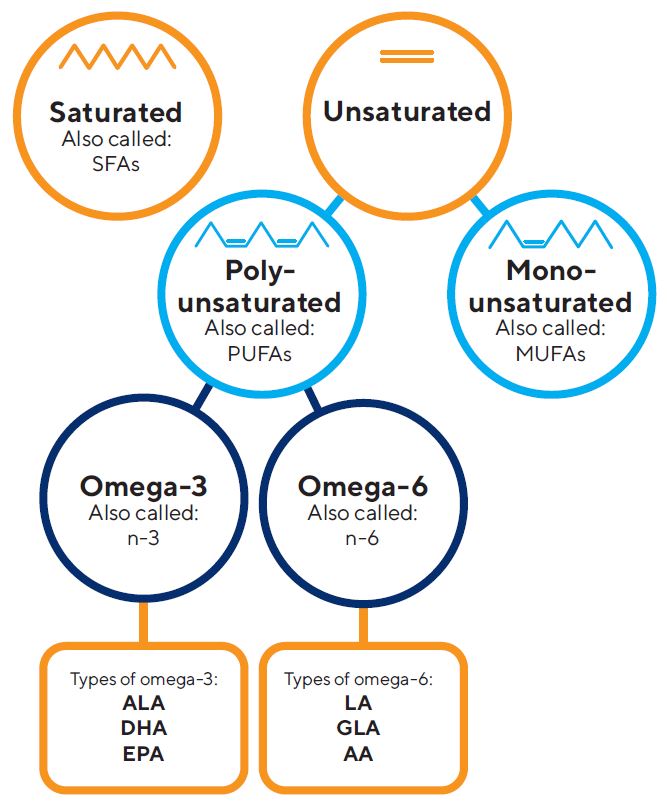
Kabrita contains DHA & AA to offer health benefits for infants
Docosahexaenoic acid (DHA) is an omega-3-fatty acid and is a primary structural component of the human brain, skin, and eye.1 DHA is crucial during infancy, with the infant growing quickly and the brain developing strongly. DHA in the brain plays an important role in infants’ cognitive, social, emotional and behavioral development. Because infants cannot synthesize DHA efficiently, the DHA composition in the brain is positively correlated with dietary omega-3 fatty acid intake.2 Infants with higher DHA intake are proven to have a better brain and visual development.3,4

DHA added to Kabrita to resemble human milk composition more closely
In 2009 and 2014, the EFSA (European Food Safety Authority) approved health claims stating that DHA contributes to normal brain and visual development of infants. Health claims are approved for formula-fed and breastfed infants after weaning, up to 12 months of age. The EFSA based their opinion on publications reporting results from randomized controlled clinical trials in which the effect of DHA on brain and visual development was proven.4,5 DHA is added to Kabrita formula to resemble human milk composition more closely and to offer infants the health benefits of DHA. The addition of DHA is compliant with the latest European nutritional and regulatory requirements.
AA added to Kabrita to resemble human milk composition more closely
From a nutritional point of view, it is essential to add arachidonic acid (AA) to infant formula, in addition to DHA. AA plays a key role in the structure and functioning of human tissues, immune function, and brain and visual development in infants. AA is a major component of the central nervous system and is required for signalling molecules regulating immune and inflammatory responses, but also for blood clotting. It is unknown if all infants can synthesize sufficient AA from linoleic acid and if the AA synthesis from linoleic acid is adequate to meet infant needs.6 Human milk contains both AA and DHA, with human milk transferring 161 mg AA/day to the infant, which is about twice that of endogenous synthesis of about 88 mg AA daily. To resemble the nutritional composition of human milk, AA is added to infant formula.6 Infant formula with DHA but without AA may induce undesirable effects like reduced AA concentrations in brain tissue, or an adverse effect on growth and immune development. AA content should be at least equal to DHA content. Nevertheless, according to EFSA AA is regarded as optional ingredient for infant formula.7 AA is added to Kabrita formula to resemble human milk composition more closely, to offer infants the health benefits of AA and to avoid the risk of damage by offering DHA without AA.
References
- 1. Lauritzen, L., et al., DHA Effects in Brain Development and Function. Nutrients, 2016. 8(1).
- 2. McNamara, R.K., et al., Docosahexaenoic acid supplementation increases prefrontal cortex activation during sustained attention in healthy boys: a placebo-controlled, dose-ranging, functional magnetic resonance imaging study. Am J Clin Nutr, 2010. 91(4): p. 1060-7.
- 3. Lawrence, R.A. and R.M. Lawrence, Breastfeeding: a guide for the medical profession. 2011: Elsevier Health Sciences.
- 4. EFSA Panel on Dietetic Products, N.a.A.N., Scientific Opinion on the substantiation of a health claim related to DHA and contribution to normal brain development pursuant to Article 14 of Regulation (EC) No 1924/20061. EFSA journal, 2009. 12(10).
- 5. EFSA Panel on Dietetic Products, N.a.A.N., Scientific Opinion on the substantiation of a health claim related to DHA and contribution to normal brain development pursuant to Article 14 of Regulation (EC) No 1924/2006. EFSA journal, 2014. 10.
- 6. Brenna, J.T., Arachidonic acid needed in infant formula when docosahexaenoic acid is present. Nutr Rev, 2016. 74(5): p. 329-36.
- 7. Koletzko, B., et al., Should formula for infants provide arachidonic acid along with DHA? A position paper of the European Academy of Paediatrics and the Child Health Foundation. Am J Clin Nutr, 2020. 111(1): p. 10-16.


